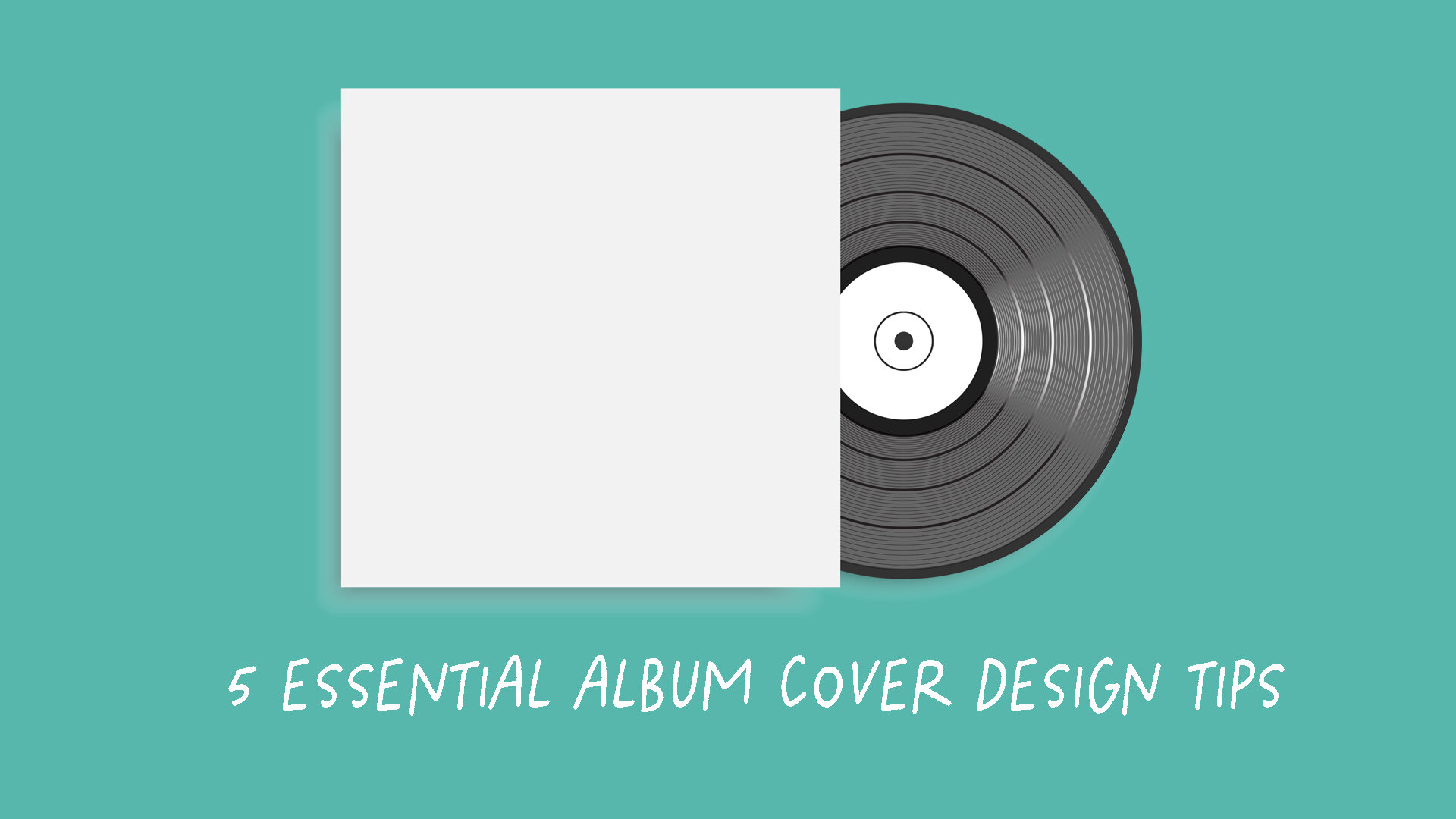5 Essential Album Cover Design Tips
Brands are everywhere in our lives, from the labels on our clothes to the foods we buy at the grocery store. Even our favorite musicians create their brands to distinguish themselves and their music from others in their field. Album covers are a direct reflection of artists’ brands and how they express themselves visually.
Some album covers will stay with us forever, instantly recognizable for their artistry as much as about the music they represent. A great album cover is like a great logo—it endears an audience to your ‘brand,’ giving them a glimpse further into the world that you’ve created through your music and performance. Rather than being an afterthought of creation, all album cover elements, from colors to typography choices, should be carefully considered. Here’s our guide to creating an album cover that represents you and your music.
Why do I need a well-designed album cover?
Although music is an abstract art form, there’s an undeniable commercial element to its creation, too. If you want an album to sell, a cover design that sends its message about the music contained within and catches the eye is also crucial, even when music is purchased through a digital store rather than plucked from record store shelves.
There’s also a legacy of excellent album cover designs that retain a place in history because of their distinctiveness, with that image becoming an inextricable part of the music the visuals represent. It mimics how clever branding communicates specific messages about a company; the way you want your audience to understand you and your music can be helped by the visuals that accompany your album release.
Five album design cover tips
Branding is the practice of creating a visual identity for your brand, and in a way, your album cover should be a similar exercise. Before you can design a compelling cover, you need to understand a few fundamentals: who are you as a musician or band? Who are your audiences? What do you want your listeners to think or feel when they listen to your music? Are you inspired by anyone or anything in particular? Answering these questions can help give you a deeper understanding of your identity as a music creator and, later, allow you to express this visually. As you would in a branding exercise, try to boil your music down to a core mission statement and use it as a springboard to create this visual representation.
Understand color psychology & brand seduction
Although it may be difficult to discern, even the most uncomplicated designs still convey a message immediately—just consider how much Apple’s logo communicates about their commitment to forward-thinking, user-friendly, and straightforward design. Color psychology has a huge role to play in this regard. The vibrant, exciting color red has a wildly different impact than that of the soothing hue of blue, so it’s crucial to think about what colors best communicate who you are. Consider how color affects your perception between these iconic covers:
Colors can communicate a lot in the visual realm so if the music is different, let the album cover be also.
There’s bold, simple, and ultra-minimal, which was the case for the album artwork for Majid Jordan’s album, The Information. In Majid Jordan’s, The Space Between, the album cover communicates visual continuity that’s effortless with the singles.
Here, Majid Jordan’s design cleverly mimicked their sensibilities as artists. What does the musician you’re trying to represent passionately believe in?
Use top typography trends
Typography has an incredible capacity to evoke feeling: just imagine how it might feel to read your daily newspaper where the text is depicted in Comic Sans instead of something classic like Georgia. You can harness the power of typography in your album cover, especially if you made this a focal point.
Play with different image styles
Many album covers choose to depict the artist within their artwork, but, as many creatives prove, that doesn’t necessarily mean a typical glamor or backs-against-the-wall band shot.
Felly (2021)
Match the mood of the music
A good starting point for album cover design is to familiarize yourself with both the music and the artist(s) you are designing for. A thorough understanding of the music’s tone can make the design process smoother and bring the outcome closer to the artist’s vision.
Cool and iconic album covers for Design inspiration
For an artist that hadn’t revealed much of himself during the early days of his career, Frank Ocean’s album cover, Blond, shows a lot while also holding onto some mystery. Moreso, the color of Ocean’s hair, paired with the white space used in the album, gives the photograph a modern and contemporary feel.
This album cover is an excellent lesson in simplicity for designers working with musicians who have a clean and straightforward aesthetic: more isn’t always more, as Ocean proves.
Interaction of Album Art & Data Visualization:
More and more artists are shifting towards visual album releases. Spotify now allows artists to create visual motifs that would typically cover your album cover’s real estate. This has opened a new window of opportunity for fans to engage with artist authenticity.
Solange is particular when it comes to her visuals. When I get Home is the culmination of experimentation, and in many ways, the album defies expectation.
She’s built a strong brand with delicate and debauched looks- this look reinforces the album’s soft sensuality.
When designing timeless cover art, you need the ability to carefully observe, to listen well to people, and to continually gain insights from personal observations. Make the most of what you have readily available to you.














